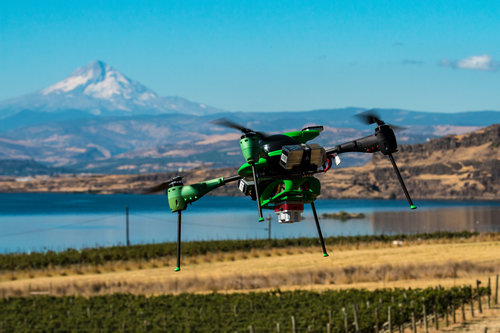Farmers and anyone within the agricultural industry who wants to know more about how drones can be used on their operation should consider attending the “Drone Uses for Agriculture Roadshow,” Aug. 13 at Iowa State University’s Ag Engineering and Agronomy Research Farm.
These small, unmanned aircraft systems, most commonly called “drones,” give farmers a unique and efficient means of monitoring their operation from above.
However, drone usage has not caught on in agriculture as rapidly as experts had first thought, and organizers of the roadshow are hoping to increase farmer knowledge of drones, and document some of the concerns and issues farmers may be experiencing with drones.
“We want to gain an understanding of what the current perception of drones is, and make sure that the technology is solving practical problems when it gets down to the farm level,” said Trevor Witt, the UAS remote sensing specialist with Kansas State University Polytechnic Campus.
The event will include a discussion on current and future uses of drones for agriculture, then will transition to demonstrations of large-area and real-time mapping, subsampling and aerial application using popular models of drones.
Participants will also receive a free jump drive loaded with sample data sets, a free work book and lunch. Additionally, a survey will be issued, to gauge farmer perception and understanding of drones.
Warren Pierson, program specialist with the Field Extension Education Laboratory with ISU Extension and Outreach, said drone use in agriculture is promising, but farmers and researchers need more information before the technology becomes widespread.
“There are a lot of things that this technology could be used for, but I don’t know that we understand all of the programs and applications just yet,” Pierson said.
The Drone Uses for Agriculture Roadshow is funded by the National Science Foundation’s “Midwest Big Data Hub: Digital Agriculture Spoke,” and is being offered in seven states, in partnership with various companies and universities.



